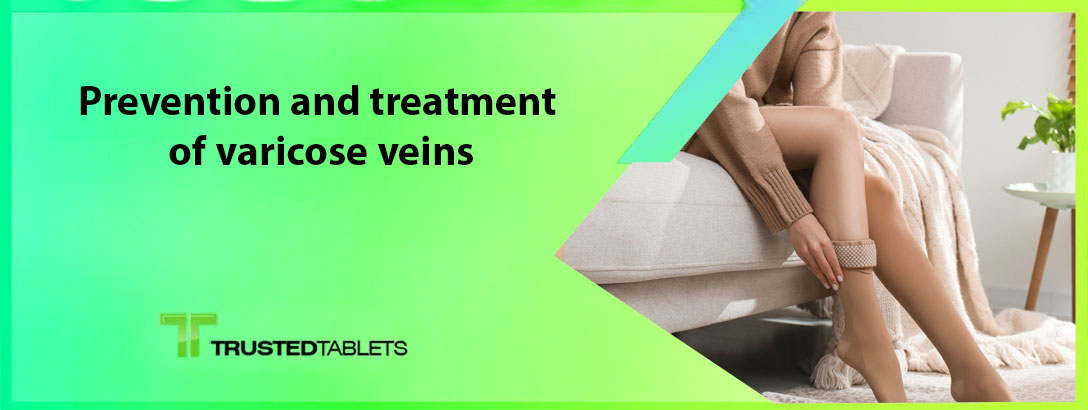Understanding Varicose Veins
Varicose veins are swollen, twisted veins that often appear blue or dark purple and are most commonly found in the legs. They occur when veins become weakened or damaged, leading to poor blood circulation.
What Are Varicose Veins?
Definition: Varicose veins are veins that have become enlarged and twisted. They typically occur in the legs due to increased pressure in the veins.
Symptoms:
- Visible Veins: Bulging, discolored veins on the legs.
- Discomfort: Aching, throbbing, or a heavy feeling in the legs.
- Swelling: Swelling of the legs or ankles.
- Itching: Itchy or dry skin around the affected veins.
Causes:
- Genetic Factors: A family history of varicose veins increases the risk.
- Hormonal Changes: Hormonal changes during pregnancy or menopause can contribute.
- Prolonged Standing or Sitting: Occupations that require long periods of standing or sitting can exacerbate the condition.
Prevention Strategies for Varicose Veins
Preventing varicose veins involves adopting lifestyle changes and managing risk factors that contribute to their development.
Maintain a Healthy Weight
Benefits:
- Reduced Pressure: Maintaining a healthy weight reduces pressure on the veins, decreasing the risk of varicose veins.
Strategies:
- Balanced Diet: Consume a diet rich in fruits, vegetables, whole grains, and lean proteins.
- Regular Exercise: Engage in physical activities that promote circulation, such as walking, swimming, or cycling.
Stay Active
Benefits:
- Improved Circulation: Regular movement helps promote healthy blood flow and prevents blood from pooling in the veins.
Strategies:
- Frequent Movement: Avoid sitting or standing for prolonged periods. Take breaks to stretch or walk around.
- Exercise Routine: Incorporate exercises that strengthen the legs and improve circulation.
Elevate Your Legs
Benefits:
- Reduced Pressure: Elevating the legs helps reduce pressure in the veins and alleviates symptoms.
Strategies:
- Elevate Regularly: Rest with your legs elevated above heart level for 15-20 minutes several times a day.
Wear Compression Stockings
Benefits:
- Support: Compression stockings provide support to the veins, reducing swelling and discomfort.
Strategies:
- Proper Fit: Choose stockings with the appropriate level of compression and ensure they fit well.
Treatment Options for Varicose Veins
When prevention is not enough, various treatments are available to manage and alleviate symptoms associated with varicose veins.
Lifestyle Modifications
Benefits:
- Symptom Relief: Simple lifestyle changes can alleviate symptoms and slow the progression of varicose veins.
Strategies:
- Avoid Tight Clothing: Wear loose-fitting clothes to avoid restricting blood flow.
- Healthy Diet: Continue to follow a diet that supports vein health.
Non-Surgical Treatments
Sclerotherapy:
- Definition: A procedure where a sclerosing agent is injected into the vein, causing it to collapse and fade.
- Effectiveness: Often used for small to medium-sized varicose veins and spider veins.
Laser Therapy:
- Definition: Uses targeted laser energy to close off affected veins.
- Effectiveness: Effective for treating smaller varicose veins and spider veins. Non-invasive with minimal downtime.
Endovenous Laser Therapy (EVLT):
- Definition: A minimally invasive procedure that uses laser energy to seal off varicose veins.
- Effectiveness: Often used for larger veins. Provides quick recovery with minimal discomfort.
Surgical Treatments
Vein Stripping:
- Definition: A surgical procedure that involves removing the affected veins through small incisions.
- Effectiveness: Suitable for more severe cases of varicose veins.
Ambulatory Phlebectomy:
- Definition: Involves the removal of varicose veins through small punctures in the skin.
- Effectiveness: Effective for removing surface veins and can be performed on an outpatient basis.
Endovenous Thermal Ablation (EVTA):
- Definition: Uses heat to close off the affected vein from within.
- Effectiveness: Effective for treating larger varicose veins with minimal downtime.
Managing Varicose Veins
Effective management involves ongoing care and monitoring to prevent complications and maintain vein health.
Regular Monitoring
Benefits:
- Early Detection: Regular check-ups can help monitor the progression of varicose veins and adjust treatment plans as needed.
Strategies:
- Routine Visits: Schedule regular appointments with a healthcare provider to assess the condition.
Preventing Complications
Benefits:
- Avoiding Severe Issues: Proper management can prevent complications such as ulcers or blood clots.
Strategies:
- Follow Treatment Plans: Adhere to prescribed treatments and lifestyle recommendations to manage symptoms and prevent progression.
Table Summarizing Information
| Topic | Key Points |
|---|---|
| Causes of Varicose Veins | Genetic factors, hormonal changes, prolonged standing or sitting. |
| Prevention Strategies | Maintain a healthy weight, stay active, elevate legs, wear compression stockings. |
| Non-Surgical Treatments | Sclerotherapy, Laser Therapy, Endovenous Laser Therapy (EVLT). |
| Surgical Treatments | Vein Stripping, Ambulatory Phlebectomy, Endovenous Thermal Ablation (EVTA). |
| Managing Varicose Veins | Regular monitoring, preventing complications, adherence to treatment plans. |
FAQ
What are the common symptoms of varicose veins?
Common symptoms include visible bulging veins, aching or throbbing in the legs, swelling, and itching around the affected area.
What causes varicose veins to develop?
Varicose veins are caused by weakened or damaged valves in the veins, often due to genetic factors, hormonal changes, or prolonged periods of standing or sitting.
How can I prevent varicose veins?
Prevent varicose veins by maintaining a healthy weight, staying active, elevating your legs, and wearing compression stockings.
What is sclerotherapy and how does it work?
Sclerotherapy is a treatment where a sclerosing agent is injected into the vein, causing it to collapse and fade. It is commonly used for small to medium-sized varicose veins.
Are there non-surgical treatments for varicose veins?
Yes, non-surgical treatments include sclerotherapy, laser therapy, and endovenous laser therapy (EVLT), which target and close off affected veins.
When is surgical treatment necessary for varicose veins?
Surgical treatments such as vein stripping or ambulatory phlebectomy are typically used for more severe cases of varicose veins or when non-surgical treatments are not effective.
How can I manage varicose veins long-term?
Manage varicose veins by following treatment plans, making lifestyle adjustments, and scheduling regular check-ups to monitor the condition and prevent complications.


